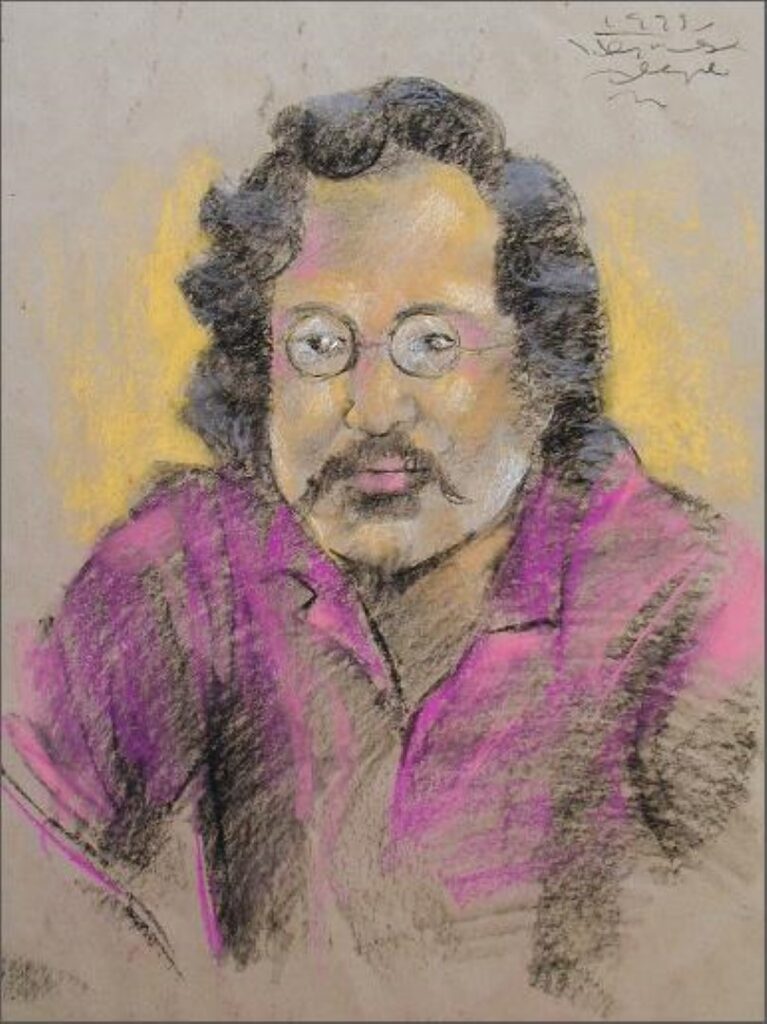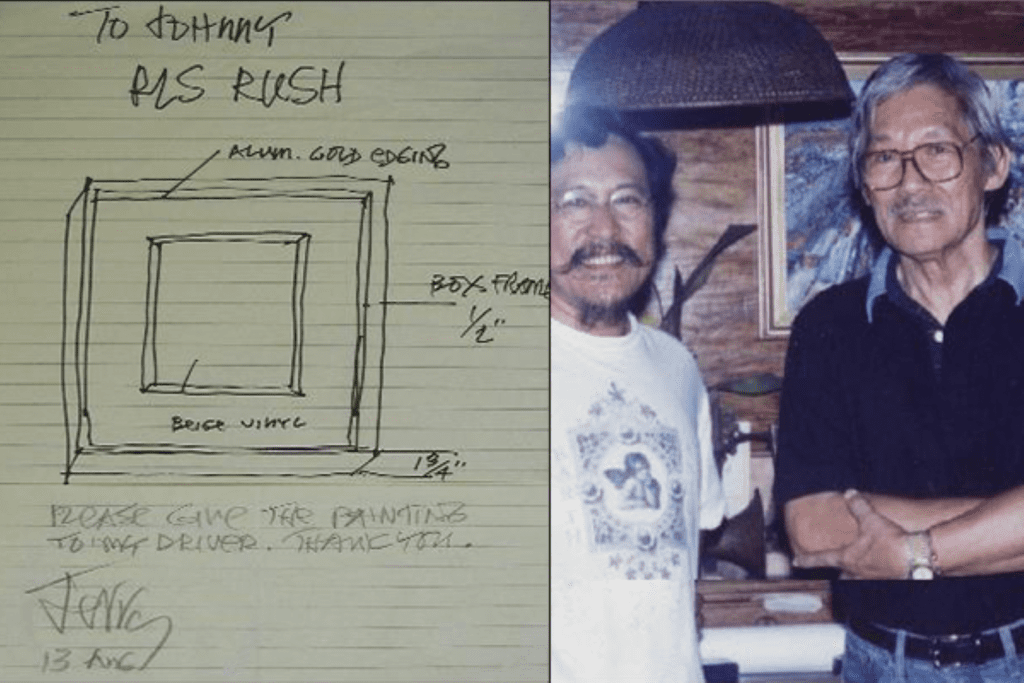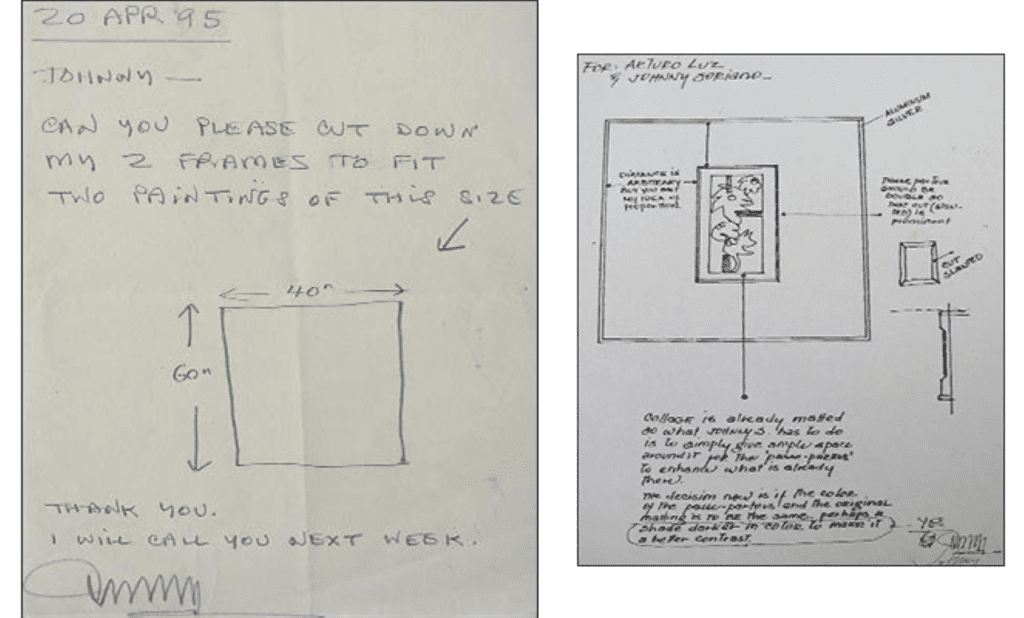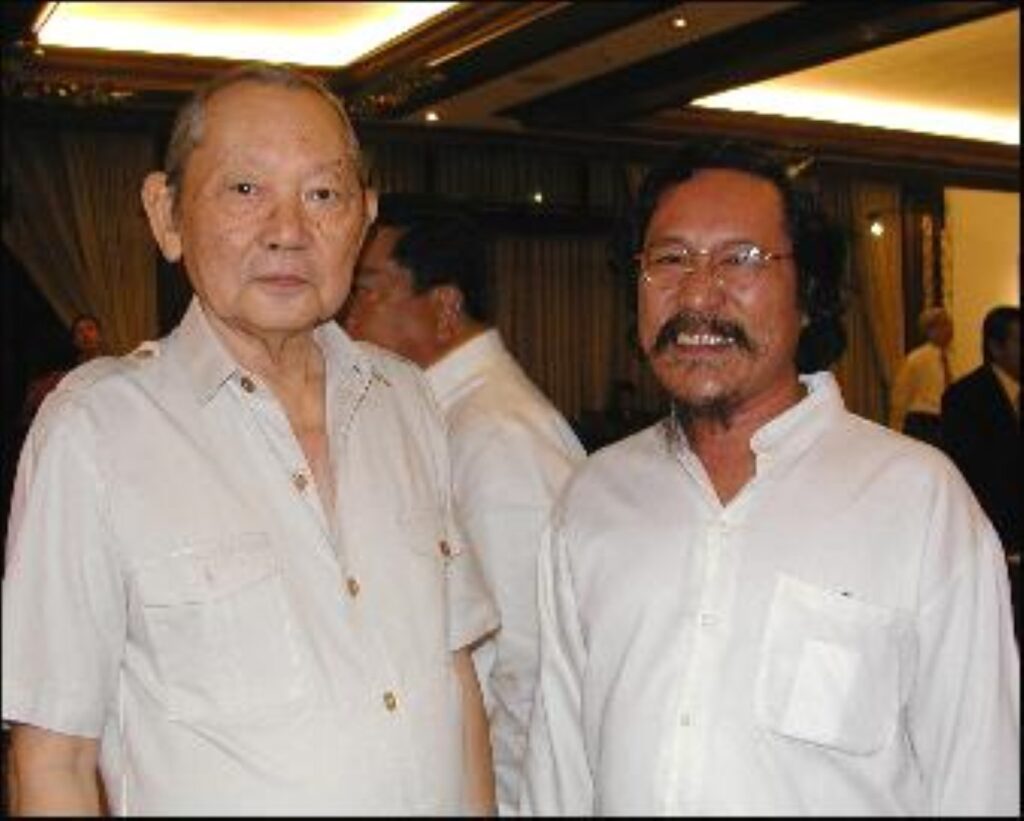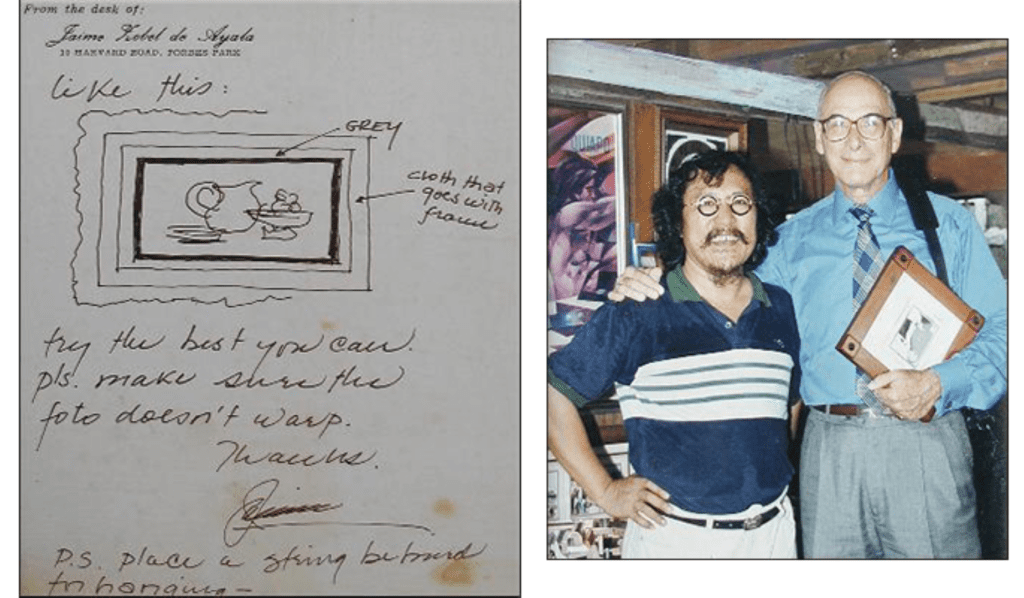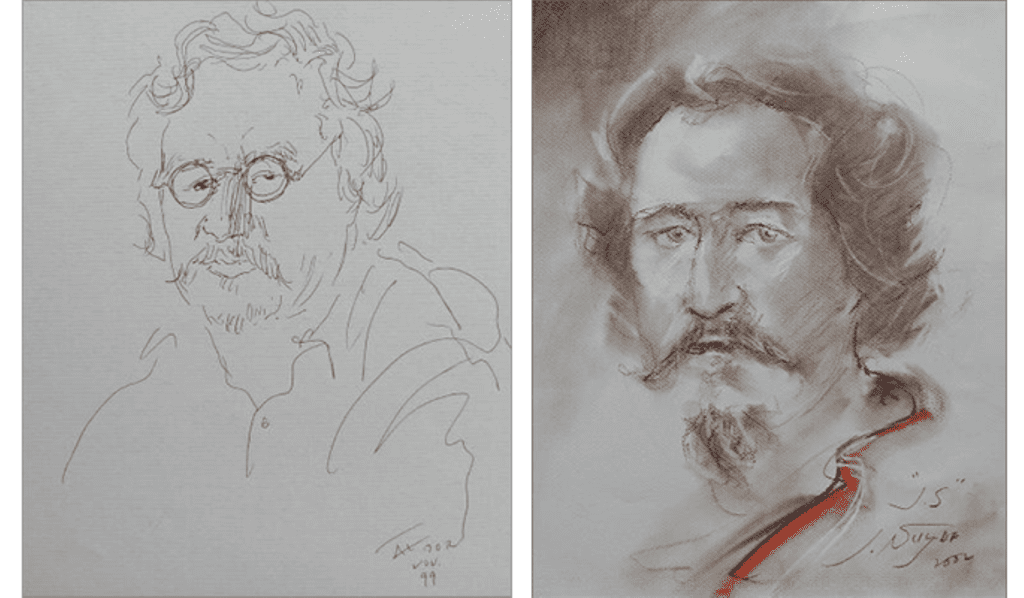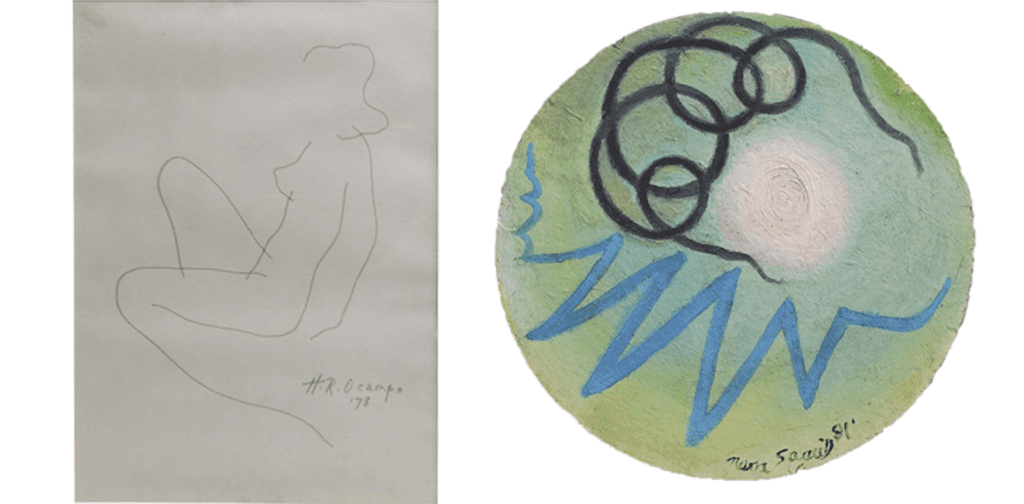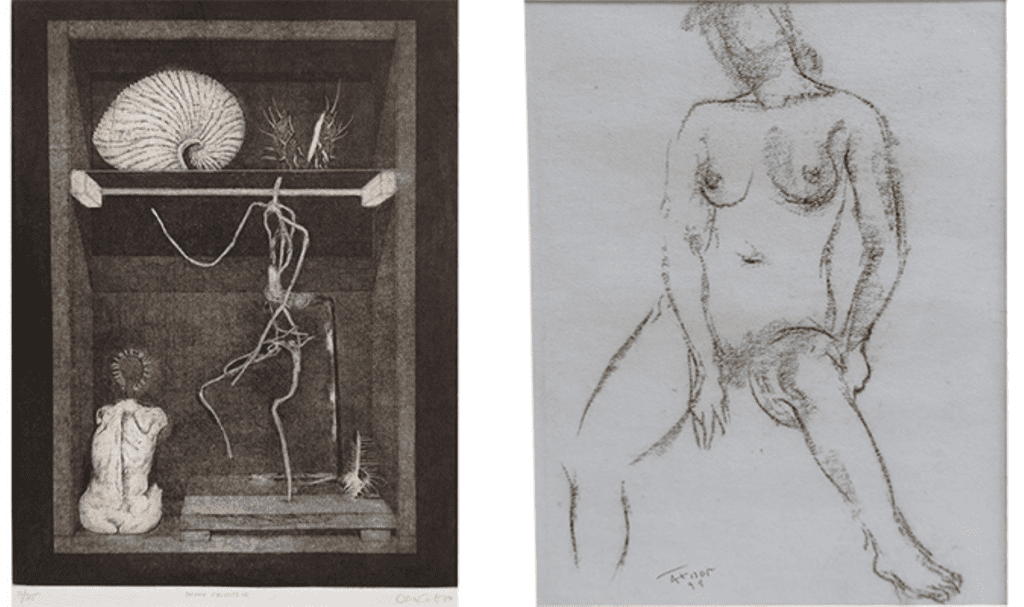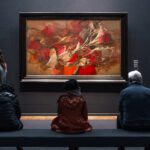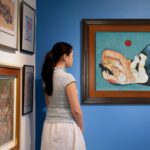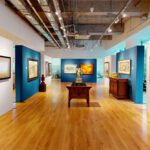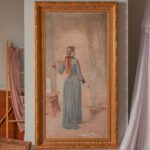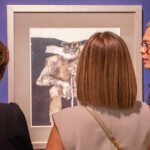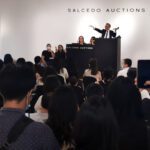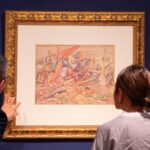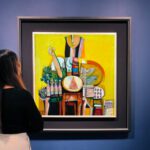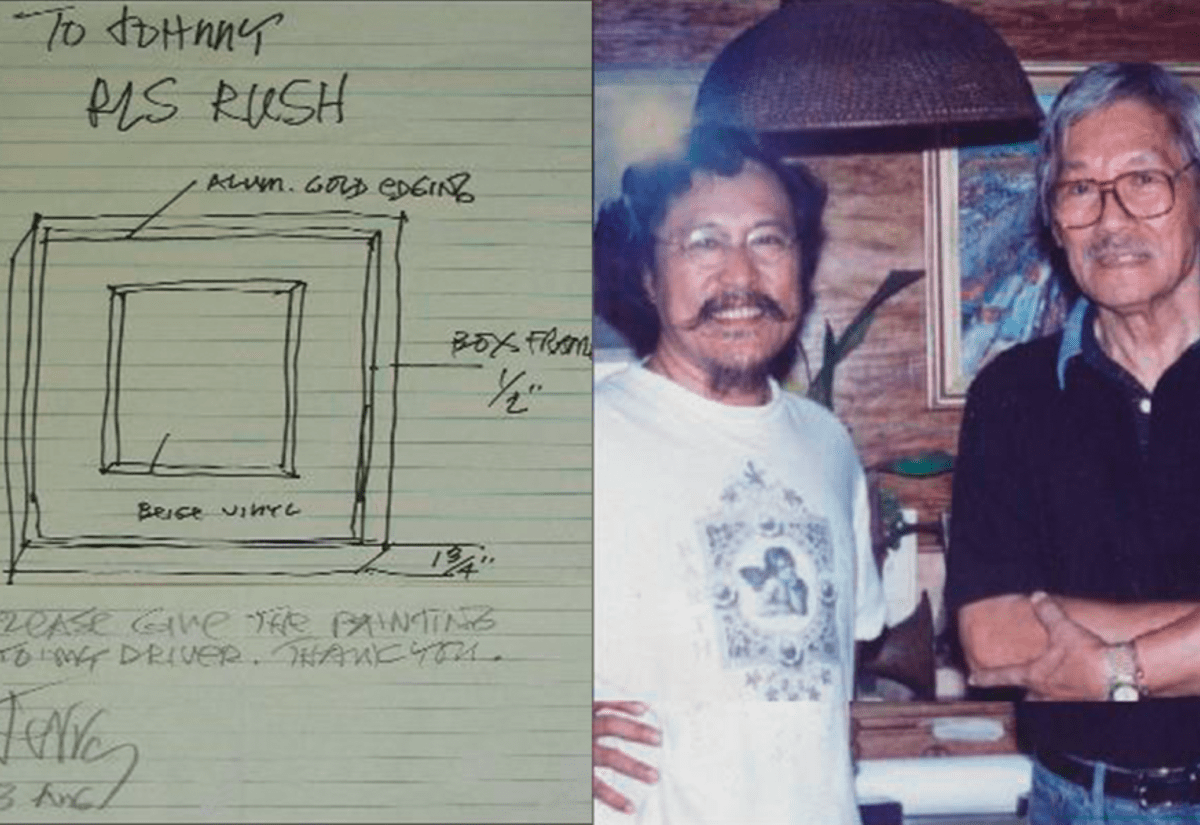
Legacy Redefined, In the Frame: The Well-Appointed Life of ‘Mang Johnny’ Soriano
- 21 August 2020
There must be a reason why an Arturo Luz painting seems incomplete without its stark black frame trimmed in either gold or silver edges, or why a large BenCab work always manages to work within a space rather than totally overwhelming it.
Put in a different way, one can say that a masterpiece doesn’t achieve its full effect until it’s housed in a masterfully created frame.
But an exemplary frame isn’t necessarily the grandest or most detailed on. It’s this understanding that earned Ricardo ‘Mang Johnny’ Soriano the title of master framer and, more importantly, the friendship and trust of many.
Soriano made his foray into the artworld with aspirations of becoming a professional artist. After trying his hand at being a draftsman, he soon found himself attracted to the craft that involved handling actual artworks, apprenticing as a frame maker in one of the few frame shops in Manila in 1972. He soon fell in love with the trade and undertook formal training at the United States Information Service. His loyal clientele followed him as he opened his own framing workshop, RS Frameline Center – the name that it still carries today.
Mang Johnny is best known for his personalized, handcrafted frames. “It didn’t matter whether the client was his personal friend, or a walk-in,” explains Mang Johnny’s son, Sim Soriano, who has taken over management of RS Frameline since his father’s passing earlier this year. “My father didn’t like saying ‘no’ to any of his clients and he always worked to provide them with a customized frame that would complement their piece. That’s just how he was as a person.”
Foremost in Mang Johnny’s mind was the need to present a frame that would not only complement the artwork, but enhance its features and integrate it into its surroundings. This is why he would often undertake home visits, to get a better sense of where the piece would hang, what it would be displayed with, well as the client’s general taste. “We always look at the colors of the artwork first,” Sim says, explaining the general planning involved in the creation of a frame. “Then we look at the surrounding objects and the interiors to see if the client prefers certain textures or styles. We want the frame to contrast with and complement the artwork – but never to compete against it.”
Sim explained how his father developed friendships with the artists who frequented his workshop. National Artists Jose Joya, H.R. Ocampo, J. Elizalde Navarro, and BenCab, as well as Gus Albor, Nena Saguil, Impy Pilapil, and Jaime Zobel were just some of the artists who would run to Mang Johnny whenever they needed a piece to be framed.
“Because of my father, we have the ‘BenCab frame,’ the ‘Arturo Luz’ frame, the ‘Joya frame,” recounts Sim. “The more he got to know an artist, the better he could understand their vision for a piece and make it happen.” In short, Mang Johnny created signature frames to match an artist’s signature style. “Frames have identities too – I make them in such a way that one design is distinguished from the other…Each frame is unique to each artist thus, different frames for different artists.” Mang Johnny himself said in an old interview.
Often, artists would send Mang Johnny their pieces together with detailed instructions on how they wanted the frame to be executed. With his craftsman’s eye, Mang Johnny would volunteer suggestions of his own, turning the work of framing into a unique collaboration between artist and framer. “Sometimes there are artists who insist that all their instructions have to be followed,” recalls an amused Sim. “But there are also times when those artists come back to the workshop after realizing that my father’s suggestions were right all along.”
It was precisely in this well-appointed environment of trust and shared love for art and craftsmanship that Mang Johnny developed friendships with the artists. After being asked whether there was ever a time when the work became too much, Sim explained how, because of those friendships, work for Johnny was often intermixed with pleasure.
“An artist would just invite him to visit their rest house and while there, they would consult him on how they could fix up certain pieces.” says Sim. “Or he would be doing a home visit to get a feel for how the frame will fit into the space and then end up staying for ‘merienda’ or dinner.”
Sim recalls how Jaime Zobel insisted on visiting Mang Johnny’s workshop in its current location in Las Pinas. “Don Jaime just wanted to visit my father. They originally planned to come to the workshop via helicopter but my dad talked them out of it, so they came by convoy instead.” laughs Sim.
National Artist BenCab also frequented their workshop. “He would create impromptu portraits of my dad while he worked, so by the time my dad was done, BenCab would have a drawing of him ready.” According to Sim, BenCab created at least three portraits of Mang Johnny. Gus Albor made five, and artists like Botong Francisco, Raul Isidro, and Roger San Miguel also sketched Mang Johnny, who was known for his trademark shoulder-length curls, beard, and glasses. “They always had fun drawing my father,” Sim shared.
Artist-friends often gifted Mang Johnny with pieces to show their appreciation. And some of these artworks are being offered by Mang Johnny’s family at auction. Visit the Gavel&Block art+design online catalogue to check them out (The pieces are listed as lots 233, 299, 371, and 372).
For Mang Johnny however, it was enough for him to know that a client was happy with his work. “My father is happy when the client sees how good the painting looks in its new frame. That was the most important and rewarding thing for him.”
When asked what he’d like people to know about his father’s legacy and the framing craft, Sim answered, “It shouldn’t be about the quantity, but the quality. My father was always after exceptional work. It was out of respect for the artistic vision of his clients who were often artists and collectors. And at the end of the day, it was the relationships he had with them that made his work so meaningful.”
When asked whether he felt fulfilled with his work in an interview, Mang Johnny replied, “My work is not only a business that sustains my family and staff. It is the gift of friendship that is most precious to me.”
